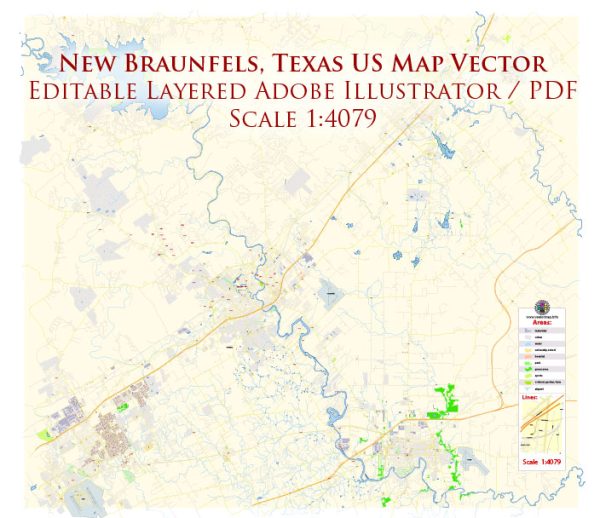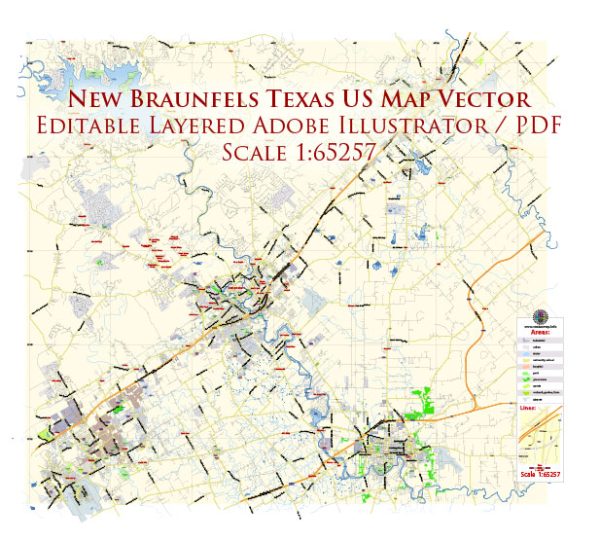New Braunfels, Texas, has a rich history of urban development that dates back to its founding in 1845 by German immigrants. The city’s development has been shaped by its cultural heritage, economic activities, and geographic location.
- Founding and German Influence: New Braunfels was established by Prince Carl of Solms-Braunfels, Commissioner General of the Adelsverein, a society dedicated to the colonization of German immigrants in Texas. The German immigrants brought with them a strong work ethic, a commitment to education, and a desire to establish a community based on their cultural values.
- Architecture and Planning: The German influence is evident in the city’s architecture and planning. The founders laid out the city with wide streets and a central public square, reflecting the traditional German “Marktplatz” or market square. Many of the original buildings were constructed in the German-Texan style, with half-timbered facades and distinctive architectural elements.
- Economic Development: The city’s economy initially relied on agriculture, with settlers engaging in farming and livestock activities. The Guadalupe and Comal rivers provided water resources for irrigation and other economic activities. Later, industries such as cotton milling and the establishment of the New Braunfels Brewing Company contributed to the city’s economic growth.
- Railroads and Transportation: The arrival of the International-Great Northern Railroad in 1880 connected New Braunfels to larger markets, facilitating the transportation of goods and people. This improved transportation infrastructure played a crucial role in the city’s development, making it more accessible to surrounding areas.
- Tourism and Recreation: New Braunfels has also become known for its tourism and recreational opportunities. The city’s location along the Guadalupe and Comal rivers has made it a popular destination for water-related activities. Additionally, the establishment of Schlitterbahn Waterpark in the 1960s has drawn visitors from across the region.
- Diversification and Growth: Over the years, New Braunfels has diversified its economy, expanding beyond its agricultural roots. The city has experienced steady population growth, attracting new residents and businesses. Suburban development has increased, with residential neighborhoods, commercial centers, and amenities catering to a growing population.
- Preservation and Heritage: Efforts have been made to preserve the city’s historical buildings and cultural heritage. The conservation of historic districts, such as the Sophienburg Museum and Archives, reflects a commitment to maintaining the unique character of the city.
Overall, the history of urban development in New Braunfels reflects a blend of cultural heritage, economic adaptation, and a commitment to preserving its unique identity. The city continues to evolve while honoring its German roots and embracing the opportunities of the present day.



 Author: Kirill Shrayber, Ph.D.
Author: Kirill Shrayber, Ph.D.